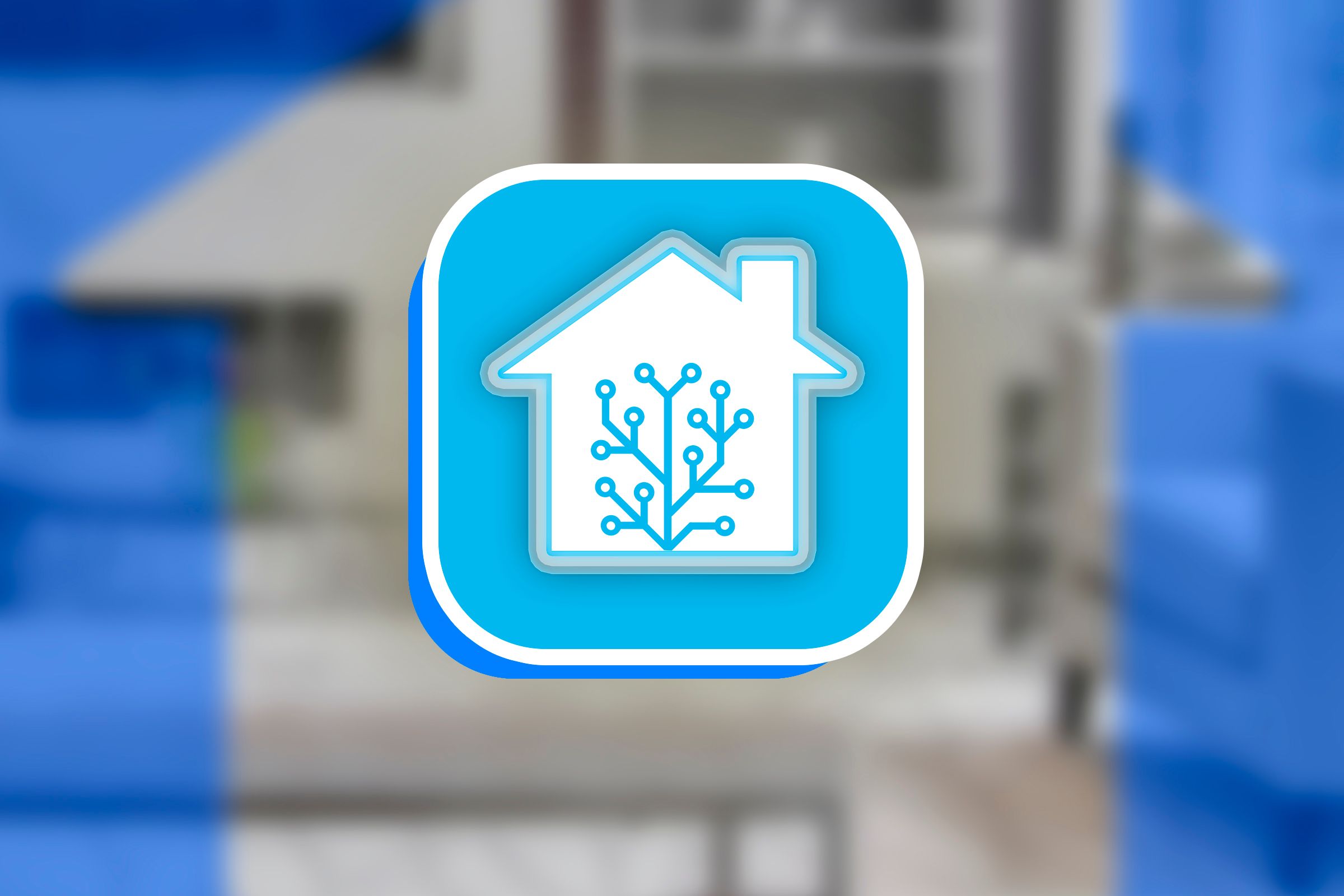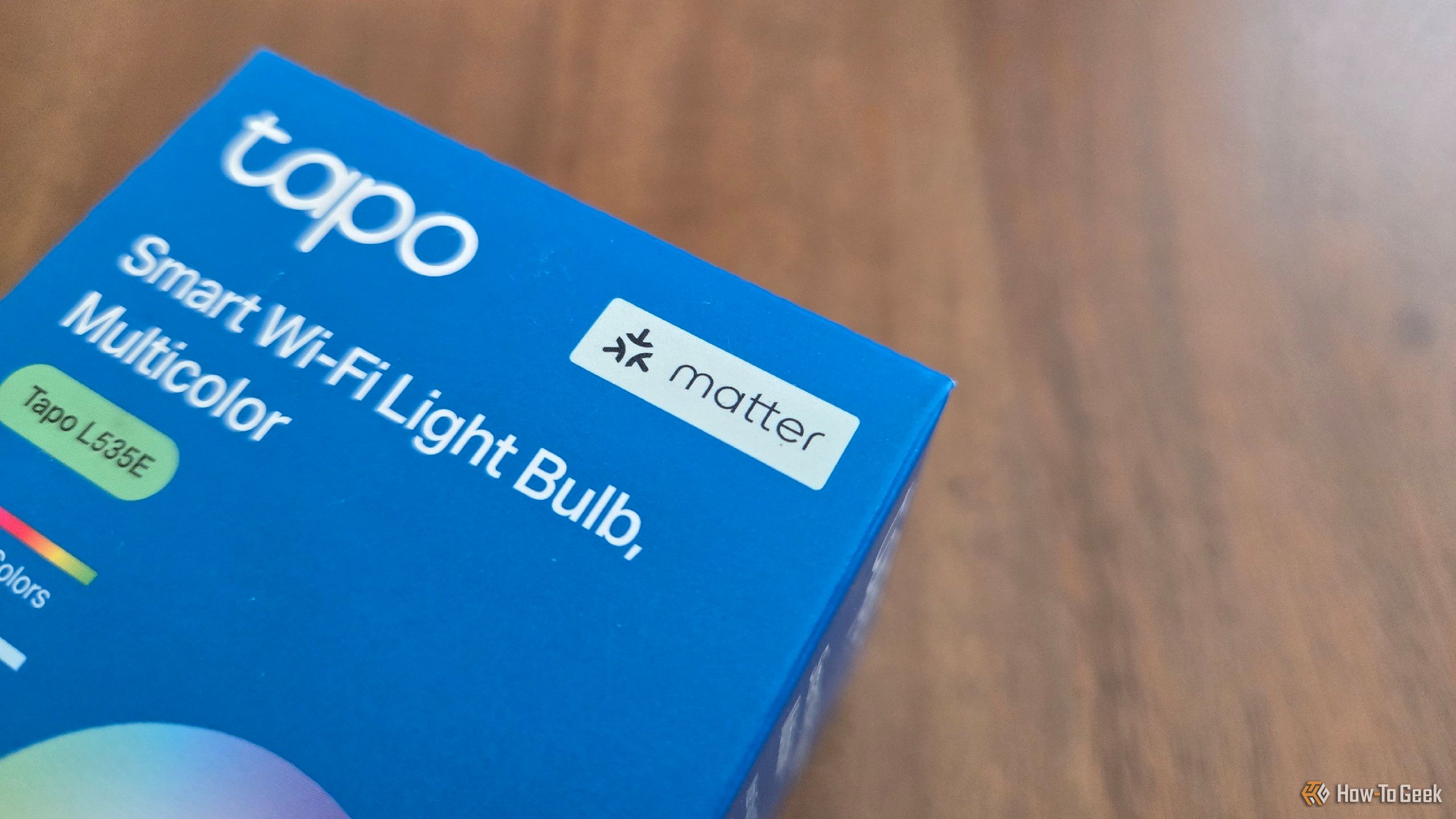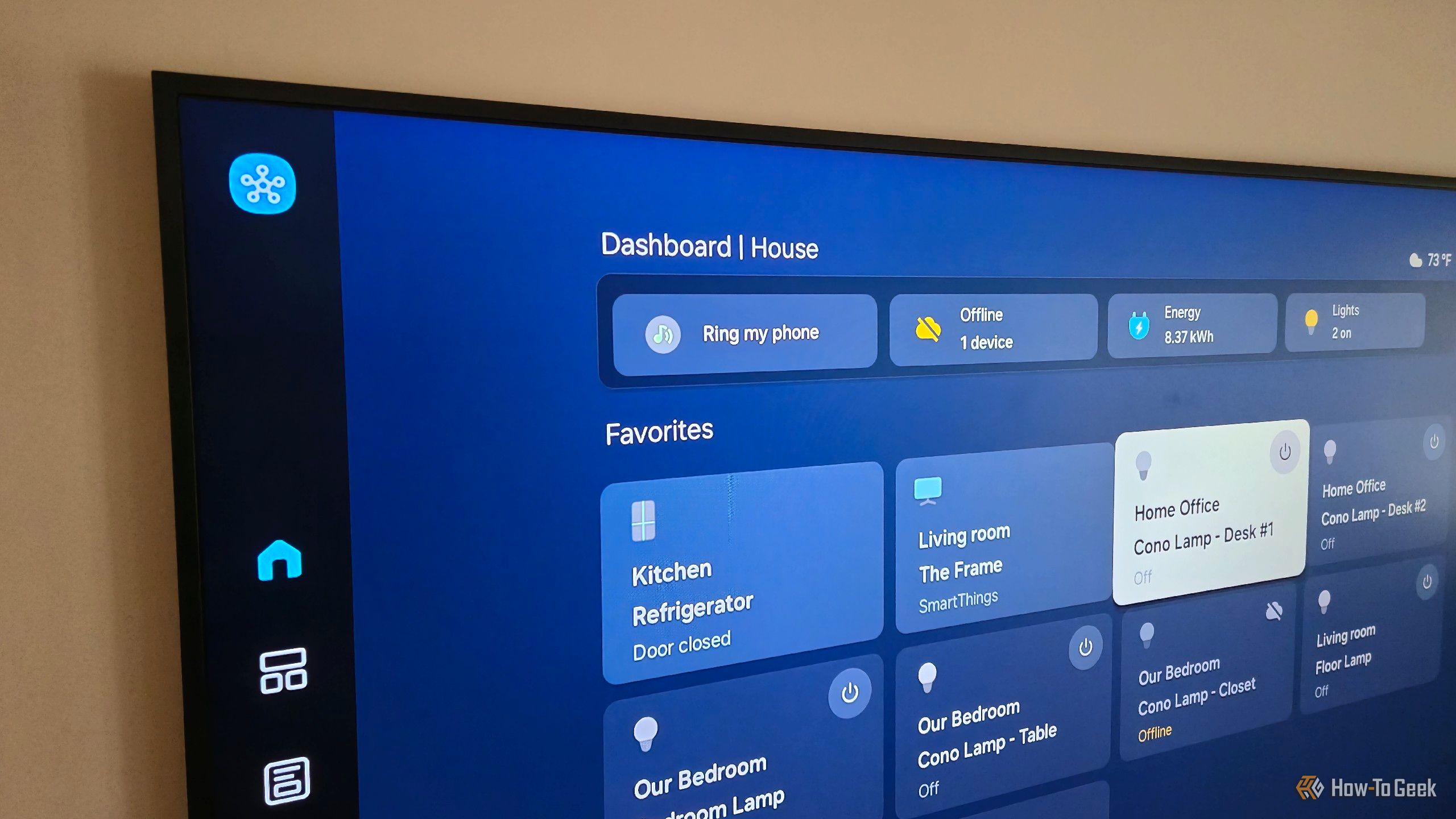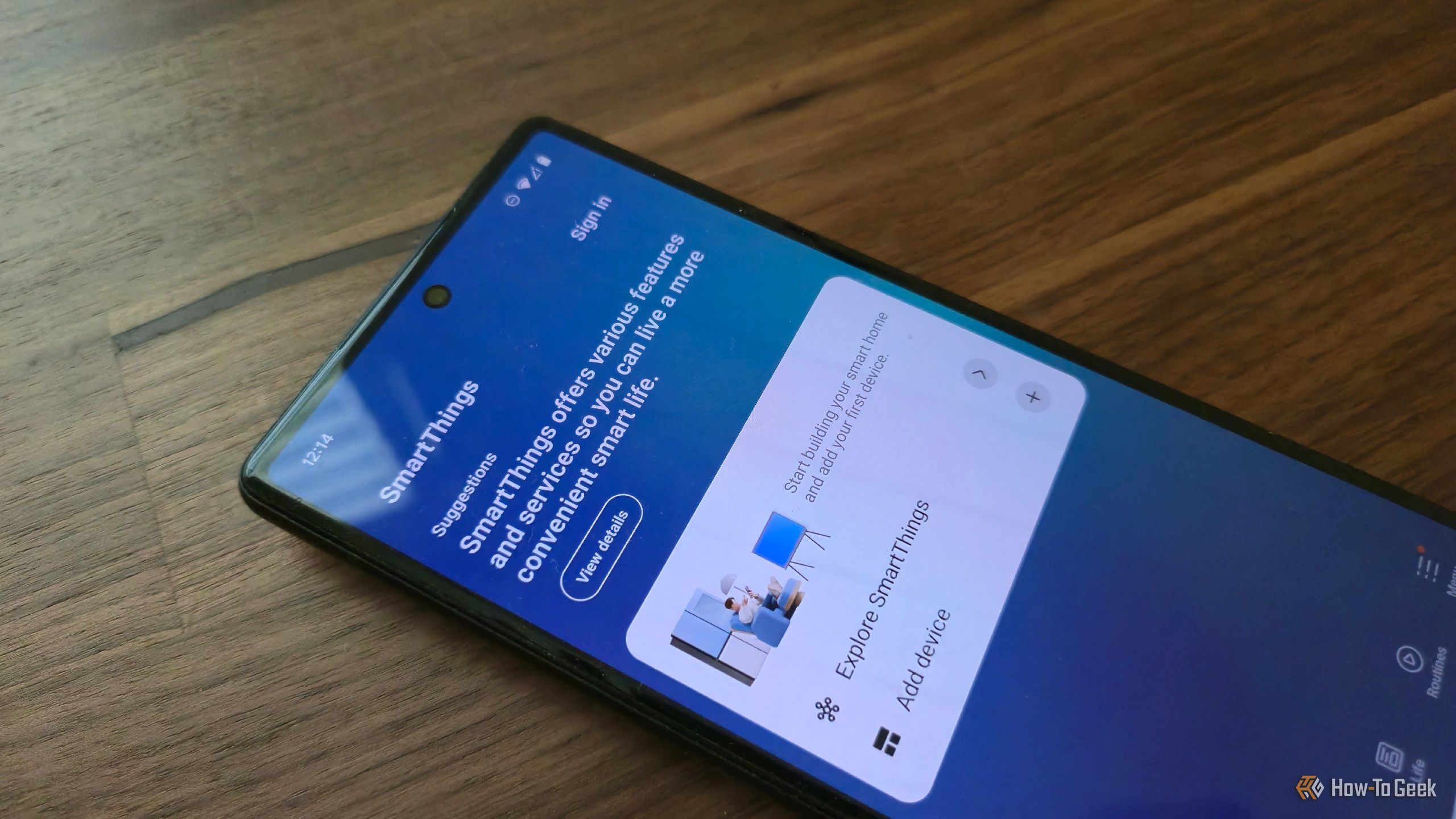If you want to try your hand at building a smart home, but you don’t want to research which smart home hub to use, I’ll save you the effort—go with Samsung SmartThings. Here’s why it’s the perfect base station, even if you use a Pixel smartphone and iPad.
Samsung Has the Best Matter Support
There are various competing standards that can make building a smart home feel like more effort than its worth. How is a newbie supposed to figure out whether to buy a Zigbee or a Z-Wave device? Thankfully, this has changed in recent years due to the addition of yet one more standard, but one that is ecosystem-agnostic and has received widespread industry support. Its name is Matter.
Look for the Matter badge when buying a light bulb, a floor lamp, a smart outlet, a door lock, or an air purifier, and you’ll be good to go—at least in theory.
Even though Matter is the reason I’m now comfortable investing in a smart home, it remains a protocol under active development. New device types are supported by different versions of Matter. While smart lighting has been supported since version 1.0, kitchen appliances weren’t added until version 1.3.
This is where things get complicated. Each of the major smart home providers (Amazon Alexa, Apple HomeKit, Google Home, Samsung SmartThings) all support a different version of Matter. Amazon, Apple, and Google are all still on the earliest versions of Matter. Meanwhile, Samsung SmartThings supports the latest version, Matter 1.4. Samsung was the first of the four to embrace Matter and continues to show the most interest.

Related
Samsung SmartThings Gets More Health and Matter Updates
Your Galaxy phone can now be better connected to your smart home devices.
You May Already Have Everything You Need
To build a smart home, you don’t just need smart gadgets. You also need a hub that can communicate with and control them all. Various Samsung TVs, smart monitors, soundbars, and fridges function as Matter hubs. This means you may already have a Matter hub in your home without having to consciously buy one. Since Samsung is also a major appliance manufacturer, you may also have various other SmartThings-compatible devices.
This is how I got my start on building a smart home. We were gifted a Samsung Frame TV that can function as a Matter hub. Our home already had a Samsung fridge, which isn’t a hub, but it prompts us to control it using Samsung SmartThings. Since these worked together well, when it was time to get a new dishwasher, we decided that would be Samsung, too. I also have my eyes on some Samsung washers and dryers, but our existing appliances still work just fine.
None of these Samsung appliances are Matter devices that other ecosystems can control. Sadly, they only work with SmartThings. Since Apple, Google, and Amazon aren’t in the business of making appliances, they aren’t yet able to flesh out their ecosystems the way Samsung can. They could do this in the future once large Matter-compatible appliances hit the market, but those haven’t yet, and, ironically, Samsung’s ecosystem is the only one that already supports a new enough version of Matter to embrace those new appliances when they do.
SmartThings Is Available on Non-Galaxy Devices
Apple HomeKit only works with Apple devices. It’s the one you think to try out first if you have an iPhone. Likewise, Google Home comes preinstalled on most Android phones. It seems logical that since Samsung SmartThings comes with Galaxy phones, it might be a Galaxy-exclusive perk, but that isn’t the case. You don’t need a Galaxy device at all.
You can download Samsung SmartThings on an iPhone by hitting up the Apple App Store. You can get the app for any Android device directly from the Play Store. Here I’ve installed the app on a Google Pixel 6.
This cross-compatibility means that if you embrace Samsung SmartThings, you aren’t out of luck just because you decide to switch phones down the line. Granted, it’s worth pointing out that Apple’s smart home platform is the only one that locks you down in this way. Google Home and Amazon Alexa both also don’t care what phone you’re using.
It’s More Beginner-Friendly Than Home Assistant
There’s a fifth major smart home platform that I haven’t mentioned yet. It’s Home Assistant, a community-supported option whose fate isn’t tied to a corporate multinational.

Related
What Is Home Assistant? And Why Isn’t Everyone Using It?
Get to know this open-source locally-controlled smart home platform.
Once you purchase enough smart home gadgets and get more ambitious with your home automations, there’s a chance you will outgrow what any of these platforms can do. Many people end up using, and recommending, Home Assistant instead.
As a community project, there are workarounds and plugins available that make Home Assistant work with even more smart gadgets than Samsung. You can even use it to add unsupported devices to Apple HomeKit. It’s the closest to a truly comprehensive solution.
Thing is, you’re going to need a dedicated hub that you have to purchase separately, and it’s not going to provide separate functionality like a smart speaker or TV. If you’re technical, you can install and set up Home Assistant yourself. Either way, as a newcomer, Home Assistant requires an investment in money or time just to experiment with whether a smart home is something you’re interested in. It’s not as easy to dip your toes in the water.
I’m not saying Home Assistant isn’t the best, but if you don’t know precisely why you want it, you’ll lose nothing by trying out one of the more accessible options first. And among those, Samsung SmartThings is the one I’d recommend.
If you want the most comprehensive smart home platforms, you choose Samsung SmartThings or Home Assistant. I fully expect I’ll be using Home Assistant some day. It’s open source and operates entirely on your local network. But for now, my smart home remains modest enough that SmartThings continues to serve me just fine.







